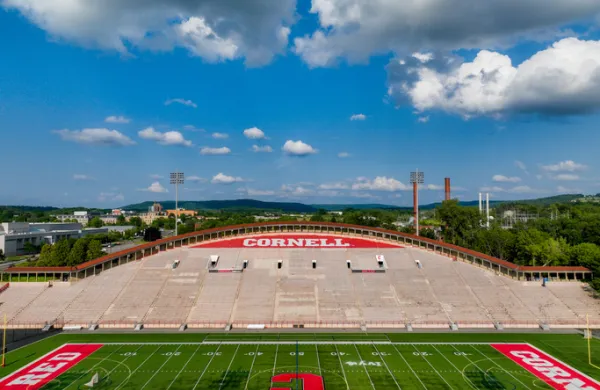It all came down to venture capital or private equity, at least for the 12 months ending in June 2023.
The returns of endowments at the richest schools were paltry, clocking in at an average of 2.1 percent for the last fiscal year. These schools can blame their huge allocations to alternative investments for underperforming smaller endowments that stick to more traditional portfolios of public securities, which did well last year.
The performance of individual elite schools that use the alternatives-heavy endowment model was further determined by whether they were heavy on venture capital, which lost 10.2 percent, or private equity investments, which were up 6.1 percent. Both performance figures come from Cambridge Associates’ indices. According to Markov Processes International, private equity and venture capital haven’t moved in opposite directions since 2003, a time when technology stocks had imploded after dot-com mania.
Michael Markov, founder of MPI, said in an interview “the dispersion between the best and the worst Ivies was defined by the type of private investments they held and the ones that were invested mostly in VCs were hammered this year.”
With little transparency into endowment portfolios, MPI used its proprietary returns-based style analysis to determine the exposure that the Ivy League and elite colleges had to major asset classes — and their contribution to the performance of the entire portfolio in fiscal year 2023. (MPI uses the annual return number that endowments release publicly in its analysis. In a paper on the subject, the firm said its analysis may deviate somewhat from actual holdings in the portfolio.)
Even in a good year, “you’re not going to get a lot of transparency,” Markov told Institutional Investor. “But in a bad year, you’ll get zero transparency from endowments. It’s not pensions where they have to give something to people.”
MPI found that Brown, Dartmouth, Princeton, and MIT have the highest amount of exposure to venture capital, which contributed to lower returns in 2023. But with Brown and Princeton, VC returns “overshadowed those of private equity, resulting in net negative performance,” according to MPI.
Markov said even though the Ivies and elite colleges all have between 30 and 40 percent in private investments, their returns vary considerably.
Markov said the analysis and insight into the endowment portfolios is important because of the lack of information provided by endowments and to counter perceptions of the volatility of private market investments.
For example, investors that held a portfolio of 70 percent stocks and 30 percent bonds were whipsawed between 2022 and 2023 alone. In fiscal year 2022, a 70-30 portfolio lost 14 percent; in the following year it gained 11.1 percent.
“PE and VC lack such dramatic swings though, primarily due to lagged and appraisal-based valuations,” wrote Markov in the report on endowment performance for fiscal year 2023 that was published Wednesday. “Critics suggest that such “volatility laundering” is one of the main reasons private markets are heavily allocated to by the Ivies and other elite endowments.” The MPI study added that Brown’s most recent annual report even states that “Stock investors 'earn' those high returns by enduring significant fluctuations in the value of their holdings. For an endowment with an annual payout, however, that volatility represents real risk.”
MPI’s analysis of the drivers of performance at Ivy and elite endowments shows an even more important finding over the last 10 years. As MPI said in its report, “Over 10 years, Ivy and elite endowments show a very clear relationship between returns and risk-taking; simply put, these endowments appear to be levered versions of a global 70/30 portfolio.”
All of the richest schools beat the 6.8 percent returns of a global 70-30 portfolio over the ten years. The average Ivy league school returned 9.8 percent. “But with significantly more risk. With a 12.6 percent standard deviation based on annual reported returns and an estimated 15.1 percent volatility based on MPI’s Transparency Lab models, the average Ivy is projected to be almost 50 percent more volatile than the global 70-30 (10.71% volatility).”
Markov said, “we took out the mystery of why endowments’ 10-year returns are much better than others: it’s purely risk, it’s totally risk.” Yale gained 10.9 percent annually over the ten years, with a 14.3 percent standard deviation. In other words, the legendary endowment had, not surprisingly, the most efficient portfolio.







